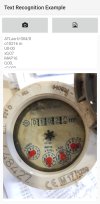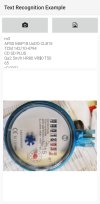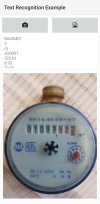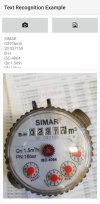Hi there...
Well, I have a small project for a friend and I want to detect "water meters / counters"... and specifically get only the part I need...
I ve tried the example of Erel (MLKIT Recognition), here.. works but not the best result... and i am think if needs to somehow train the system... my app... a model for using for that i need...
I am attacting some screenshoots to understand the problem..
And I am analyzing the best result took...

The OCR giving the following:
ATLaa-U-004/0
o10216m
So let's say that somehow i must understand that the value: "o10216m" is what i need... actually is 01026
1. Is there a way to have some rectangles on camera-image (live) and selecting the rectangle (pane) and may be a zoom-control give me the result ? (Something like GOOGLE LENS)
2. Is there a better way for such things ?
3. Is there a way selecting different model - for MLKIT ... ?
Thanks in advance...
Well, I have a small project for a friend and I want to detect "water meters / counters"... and specifically get only the part I need...
I ve tried the example of Erel (MLKIT Recognition), here.. works but not the best result... and i am think if needs to somehow train the system... my app... a model for using for that i need...
I am attacting some screenshoots to understand the problem..
And I am analyzing the best result took...
The OCR giving the following:
ATLaa-U-004/0
o10216m
So let's say that somehow i must understand that the value: "o10216m" is what i need... actually is 01026
1. Is there a way to have some rectangles on camera-image (live) and selecting the rectangle (pane) and may be a zoom-control give me the result ? (Something like GOOGLE LENS)
2. Is there a better way for such things ?
3. Is there a way selecting different model - for MLKIT ... ?
Thanks in advance...





